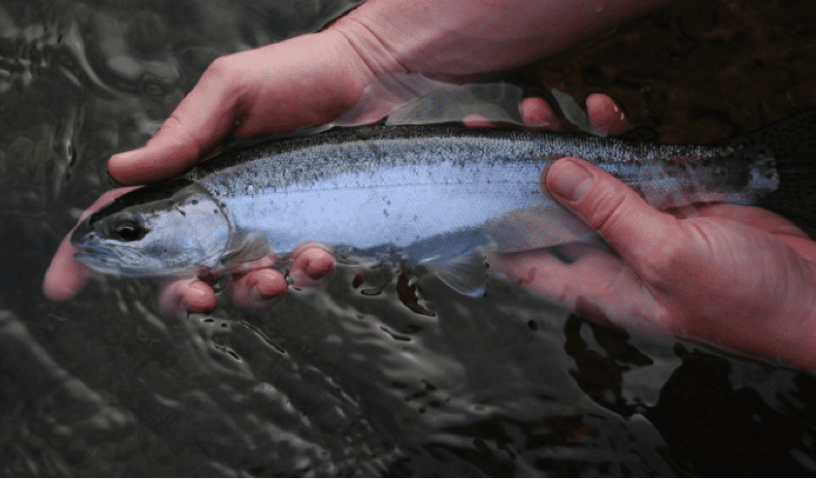Friday May 16, 2014
 Salmonid research has an extensive history in California: studies on steelhead (Oncorhynchus mykiss) and Chinook salmon (O. tshawyscha) in Northern California rivers date back to the mid-19th century. Notable researchers who conducted these foundational studies include Livingston Stone (Federal Fish and Culture program and founder of the American Fisheries Society), John Snyder (Stanford University), Willis Rich (U.S. Bureau of Fisheries) and Cloudsley Rutter (U.S. Fish Commission). Much of this early work described the life history, size characteristics, commercial catches, and migration timing of Chinook salmon and steelhead in Central Valley rivers, the Klamath River, and the ocean.
Salmonid research has an extensive history in California: studies on steelhead (Oncorhynchus mykiss) and Chinook salmon (O. tshawyscha) in Northern California rivers date back to the mid-19th century. Notable researchers who conducted these foundational studies include Livingston Stone (Federal Fish and Culture program and founder of the American Fisheries Society), John Snyder (Stanford University), Willis Rich (U.S. Bureau of Fisheries) and Cloudsley Rutter (U.S. Fish Commission). Much of this early work described the life history, size characteristics, commercial catches, and migration timing of Chinook salmon and steelhead in Central Valley rivers, the Klamath River, and the ocean.
Among the early literature is John Snyder’s first description in 1925 of the “half-pounder” steelhead life history type in the Eel and Klamath rivers. A half-pounder is an immature steelhead that returns to freshwater within about four months of entering the ocean, and is primarily found in rivers in Northern California and Southern Oregon. The steelhead that make this migration spend the winter in freshwater and actively feed during the winter. This particular migration contrasts with the migration patterns of steelhead populations elsewhere throughout the range, as most other steelhead will spend one or two years in the ocean before returning. Adult steelhead from both the Klamath River and Rogue River watersheds frequently exhibit the half-pounder life history, based on research conducted by Jim Hopelain (1998) and Fred Everest (1972).
More recent research has focused on temporal trends in how frequently the half-pounder life history is found in steelhead populations. A recent Masters thesis completed by one of our biologists documented the inter-annual variation in the prevalence of the half-pounder life history among Trinity River steelhead, which has been quite variable over the past 30 years. The study used scales collected from wild and hatchery-origin adult steelhead trapped at a weir on the Lower Trinity River and looked for evidence of a previous half-pounder migration early in a fish’s life. Like tree rings, patterns on fish scales can be used to reconstruct the life of the fish. Another objective of the study was to investigate why certain steelhead went on a half-pounder migration and why others did not. For both wild and hatchery steelhead, an individual fish’s size at the end of its freshwater rearing period appeared to be associated with its “decision” to undergo the half-pounder migration. Based on the results, steelhead smolts that were smaller than average were more likely to undergo the half-pounder migration compared to those that were not. From an ecological perspective, the half-pounder migration may be a strategy to increase the chance of survival by over-wintering in freshwater habitats instead of the ocean.
